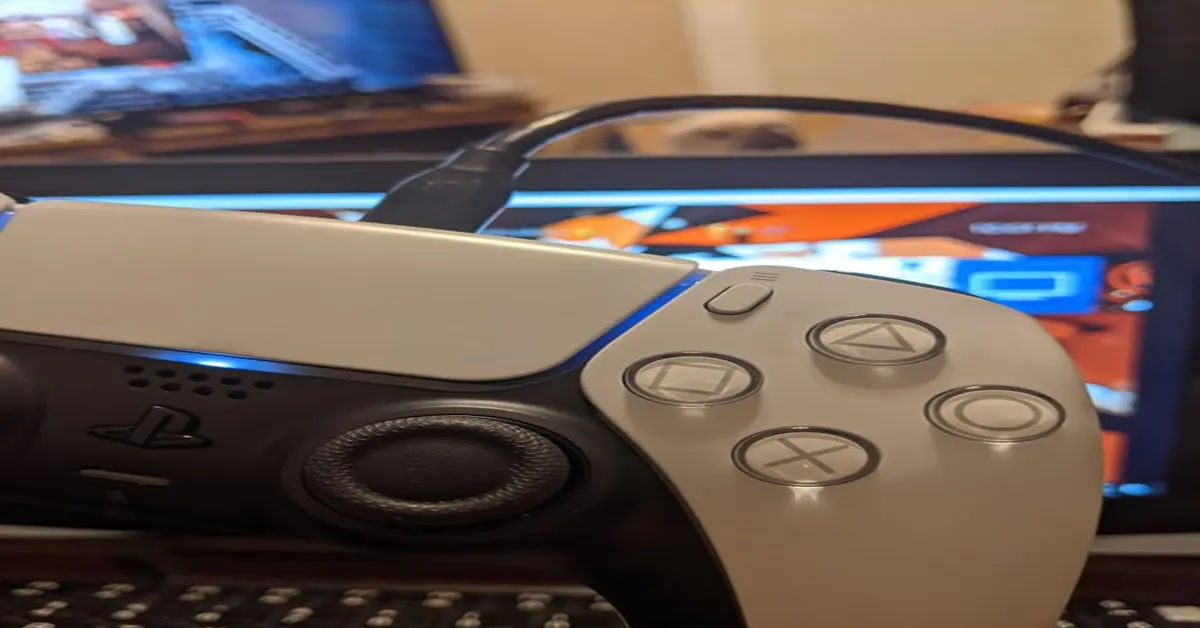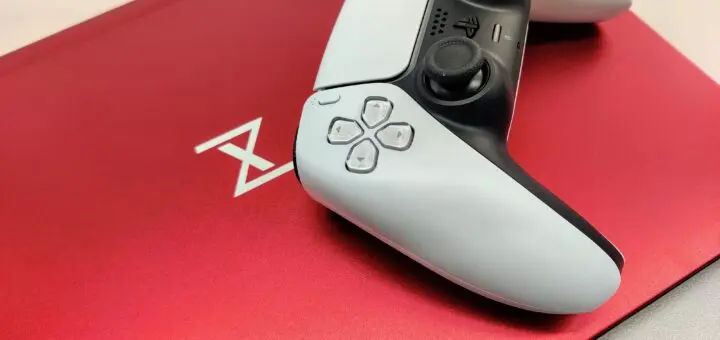How to Use the PS5 DualSense Controller on a Windows PC

Are you excited to use your PS5 DualSense controller on your Windows PC, but not sure where to start? You're not alone. Many gamers want to experience the improved haptic feedback and adaptive triggers of the DualSense controller on their PC, but the process can seem daunting. In this post, we'll break down the steps to connect and use your DualSense controller on a Windows PC, making it easy for you to enjoy your favorite games with enhanced gaming experience.
The PS5 DualSense controller is a significant upgrade over its predecessors, offering a more immersive gaming experience with its advanced features. However, using it on a Windows PC requires some setup and configuration. In this article, we'll guide you through the process, covering everything from connecting the controller to configuring it with Steam and using it with non-Steam games. Whether you're a seasoned gamer or just starting out, this post will provide you with the knowledge you need to get the most out of your DualSense controller on your Windows PC.
By the end of this article, you'll be able to connect your DualSense controller to your Windows PC, configure it with Steam, and use it with your favorite games. We'll also cover some additional considerations to ensure you have a seamless gaming experience. So, let's dive in and explore the world of PC gaming with the PS5 DualSense controller.
Connecting the PS5 Controller to Your PC

To start using your DualSense controller on your Windows PC, you need to connect it first. You can connect the controller using a wired connection or Bluetooth (wireless) connection.
Wired Connection
For a wired connection, use a USB Type-C cable (Buy USB Type-C Cable on Amazon) to connect the controller to a USB port on your PC. Ensure the cable supports data transfer. If you're looking for alternative gaming controller options, you can also consider connecting an Xbox controller to your PC - check out our guide on How to connect Xbox Controller to PC.
Bluetooth (Wireless) Connection
For a Bluetooth (wireless) connection:
- Open the Settings app on your PC and navigate to Bluetooth & devices (Windows 11) or Devices (Windows 10).
- Click "Add device" and select "Bluetooth."
- Put the DualSense controller in pairing mode by holding the PlayStation and Share buttons until the lights around the touchpad turn on.
- Select the controller when it appears as a "Wireless controller" on your PC. If your PC doesn't have Bluetooth, you can use a Bluetooth adapter (Buy Bluetooth Adapter on Amazon).
Setting Up the DualSense Controller with Steam

Once connected, you need to set up the DualSense controller with Steam.
Configuring Steam Input
To configure Steam Input:
- Launch Steam (Download Steam) and go to "Steam" > "Settings."
- Open the "Controller" tab.
- Ensure Steam Input for PlayStation controllers is enabled. You can override native support by changing the dropdown to "Enabled."
- Test and configure inputs by clicking "Begin Test" next to "Test Device Inputs."
- For advanced settings, click "Open" next to "Calibration and advanced settings."
Using the DualSense Controller with Non-Steam Games

If you want to use the DualSense controller with non-Steam games, you have a few options.
Adding Non-Steam Games to Steam
You can add non-Steam games to your Steam library:
- Open Steam (Download Steam) and select "Games" > "Add a non-Steam game to My Library."
- Locate the executable file for the game you want to add. This allows you to use Steam's configuration tool for non-Steam games, though some Microsoft Store games may not be compatible. For more information on optimizing your PC for gaming, check out our guide on How to Make Your Computer Faster.
Using DS4Windows for Non-Steam Games
Alternatively, you can use DS4Windows (Download DS4Windows) to configure your DualSense controller for non-Steam games. This software allows you to customize your controller settings and map buttons to your liking. Here’s how to set it up:
- Download DS4Windows from the official GitHub page.
- Extract the downloaded files and run DS4Windows.exe.
- Follow the setup wizard to install the necessary drivers.
- Connect your DualSense controller via USB or Bluetooth.
- Once connected, DS4Windows will recognize the controller. You can now customize button mappings, sensitivity, and other settings.
- Launch your non-Steam game, and DS4Windows will run in the background, allowing you to use your controller seamlessly.
Customizing Your DualSense Controller Settings

To enhance your gaming experience further, you can customize your DualSense controller settings. This includes adjusting the haptic feedback and adaptive triggers.
Using Steam's Controller Configuration
Steam provides a robust controller configuration tool that allows you to:
- Remap buttons to suit your preferences.
- Adjust the sensitivity of the sticks and triggers.
- Enable or disable features like haptic feedback.
To access these settings:
- Open Steam and navigate to "Settings" > "Controller".
- Click on "General Controller Settings."
- Select your DualSense controller and click on "Preferences."
- Here, you can customize various settings to enhance your gameplay.
Using DS4Windows for Advanced Customization
If you prefer more advanced customization options, DS4Windows offers features such as:
- Creating multiple profiles for different games.
- Adjusting the intensity of the haptic feedback.
- Mapping touchpad gestures to keyboard shortcuts.
To customize settings in DS4Windows:
- Open DS4Windows and select your controller.
- Click on the "Profiles" tab to create or edit profiles.
- Adjust the settings as desired and save your profile.
Troubleshooting Common Issues

While using the DualSense controller on a Windows PC, you may encounter some common issues. Here are some troubleshooting tips to help you resolve them:
Controller Not Recognized
If your controller is not recognized:
- Ensure the controller is properly connected via USB or Bluetooth.
- Restart your PC and try reconnecting the controller.
- Update your Bluetooth drivers if using a wireless connection.
Input Lag or Delay
If you experience input lag:
- Check your Bluetooth connection and ensure there are no obstructions.
- Use a wired connection for a more stable experience.
- Close background applications that may be consuming system resources.
Haptic Feedback Not Working
If the haptic feedback is not functioning:
- Ensure that the game you are playing supports DualSense features.
- Check your Steam settings to ensure haptic feedback is enabled.
- Update your controller firmware if necessary.
Conclusion
Using the PS5 DualSense controller on a Windows PC can significantly enhance your gaming experience, thanks to its advanced features like haptic feedback and adaptive triggers. By following the steps outlined in this guide, you can easily connect your controller, configure it with Steam, and use it with both Steam and non-Steam games.
Remember to customize your controller settings to suit your gaming style and troubleshoot any issues that may arise. With the right setup, you'll be ready to enjoy your favorite games with the immersive experience that the DualSense controller offers. Happy gaming!





